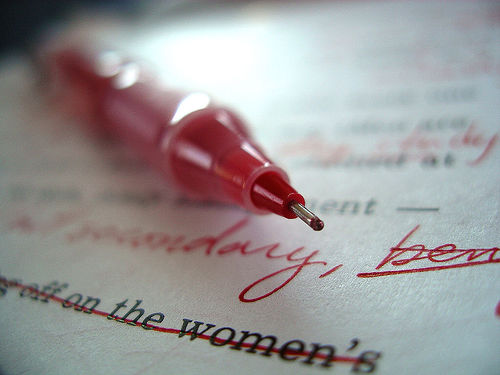I work really hard when I write. It’s some of the most enjoyable time I spend (tied with practicing cello, dancing, and flying). A few years ago, I hassled the folks over at Strings into letting me scribble a bit for them. I am still astonished that they keep calling me back for more, given my, ahem, particular writing style. Each time I submit an outline or draft, I get more adventurous: a conversational cadence here and there, using words like “persnickety” and the classic “zesty”, etc. And each time, they shoot me down.
And I get disheartened. And then I get over it because they are paying me for a product. And I have it within me to produce that product.
The same is true of writing at Hopkins. We were confined by the APA rules. I refuse to call it APA style, because the only thing that sets it apart is its complete lack thereof. I can see that it is valuable for researchers and clinicians who are not moved by Updike and Lawrence and are in need of some guidelines for publishing reasonably cohesive prose. Still, I find that an elegant turn of phrase leads me to read and absorb whereas drier stuff is more like reading simply to endure.
It was a muscular exercise in restraint to stick to the APA guidelines. And even then, my professors would always offer a few comments; some appreciative, some bemused, others in finger-wagging admonition. Fair enough.
So this latest assignment from Strings is a whopper. It’s a huge series devoted to technique: my wheelhouse, my love, my darling. Were I allowed to write these pieces in my customary fashion, I would never produce an outline. I tend to ruminate for a while and see the end point- sometimes even the last phrase or two. Then I go methodically forward from the start, making sure each subsequent step points squarely to that final thought. It is the way I conceived this post, in fact. An assignment this size is a big commitment for a magazine, though: and they wanted a detailed outline.
Agony.
They sent me a copy of the violin version of this piece, and I loosely adhered to it, but decided that once again I’d venture closer to the edge with my archetypal style. (there were exclamation points and irony! contradictions and hyperbole! intentional assonance!) My phone rang a few hours later, and my editor’s voice rang clear:
“Leave the personality for later.”
Oof.
Because I am a grown-up, I immediately gathered myself and did what any self-respecting mature writer would do: poured myself a Scotch and pouted for 2 straight days.
My editor emailed me a few days later wanting a check up and I replied, “Yes, I’m working on it. Less me.” He replied: “Just less up for interpretation. Clearer.”
I pouted for another 20 minutes and then it hit me: I don’t have to be any less authentic to my style. This is making me expand my range, add a facet, work harder! The real trick is going to be getting my voice across through this new set of constraints. And I accept that challenge, b*tches.
After that, I did what any self-respecting nearly grown-up writer would do: I made myself a cup of tea and got down to work. I received a call from my editor (who had just gotten off the phone with Yo-Yo Ma moments earlier) and he said, “Yes. This.”
Yes.
This.



3 Responses
Part of being a professional wordsmith is adapting your style to your audience (or client). I passed sociology courses in college by imitating the insomnia-remedy writing style of the sociologists. When I was a military staff officer I added a fog factor to my memoranda because some war heroes are frightened by active verbs. Speechwriting was a challenge when the speaker was genuinely stuffy. I enjoy your writing, and you should be able to use the style your editors want as a jumping-off point and add enough sparkle to make it yours. If you are lucky you will work with an editor who has the sensitivity to align your work with the magazine’s style while letting your personality shine through.
Enjoyed your post, Emily! I can relate–I work for a newspaper where I am both constrained by the editorial style, and constrain others with it, as I edit the personality out of their submissions. I do write a blog for the paper as well, and there I try to inject some personality. You are a wonderful, expressive writer. Good luck finding that perfect balance!
Очень трендовые новости модного мира.
Абсолютно все новости всемирных подуимов.
Модные дома, торговые марки, haute couture.
Самое приятное место для трендовых хайпбистов.
https://fashionsecret.ru